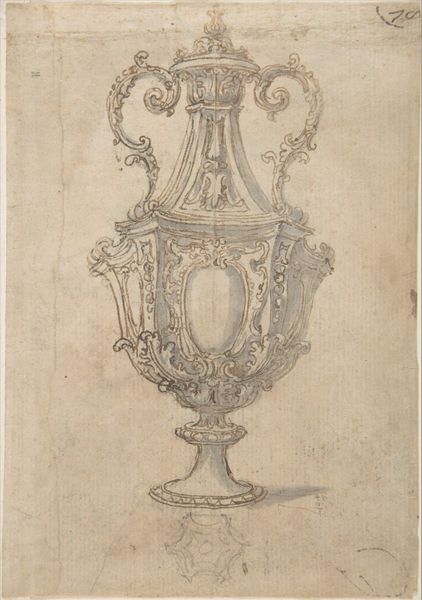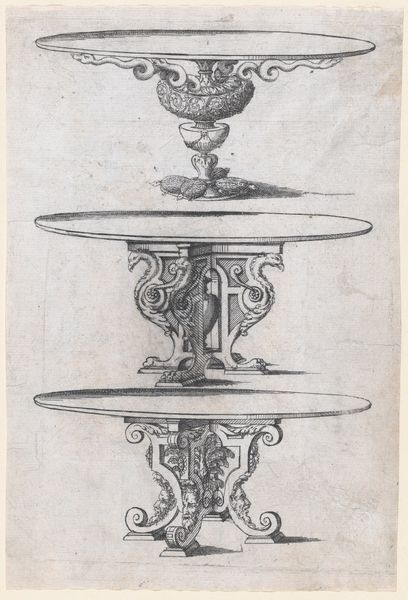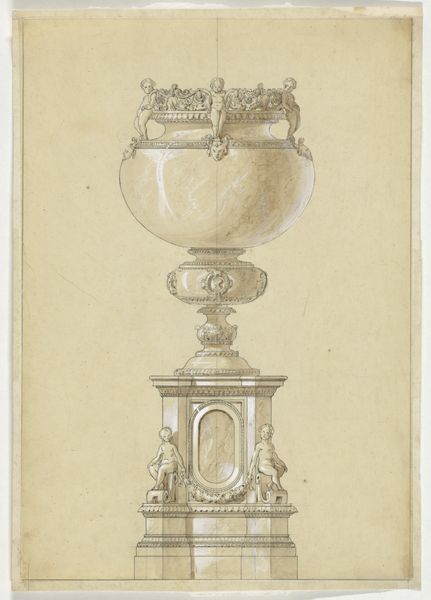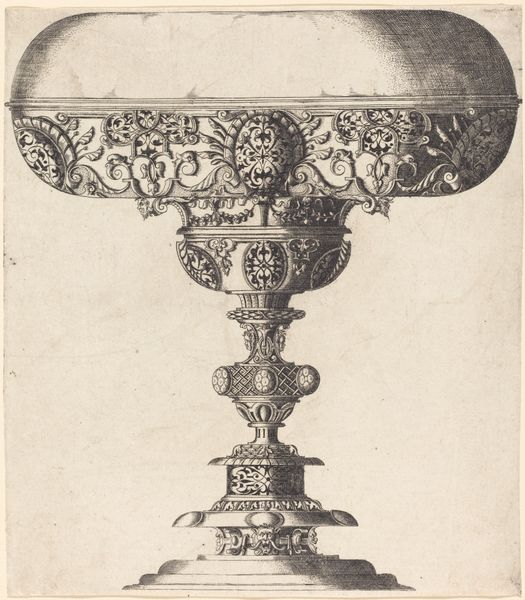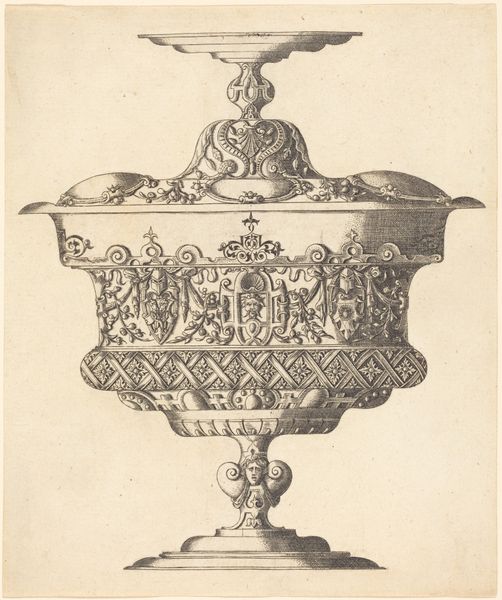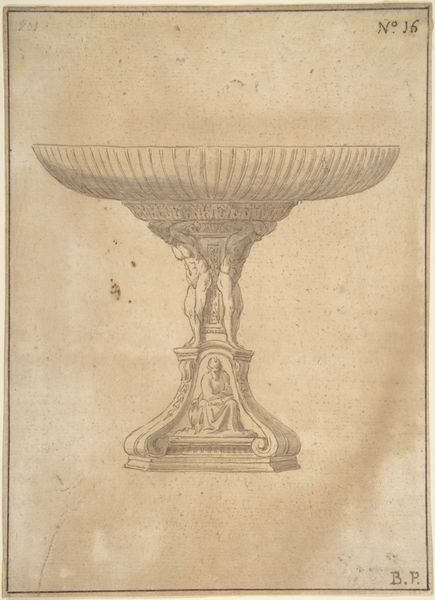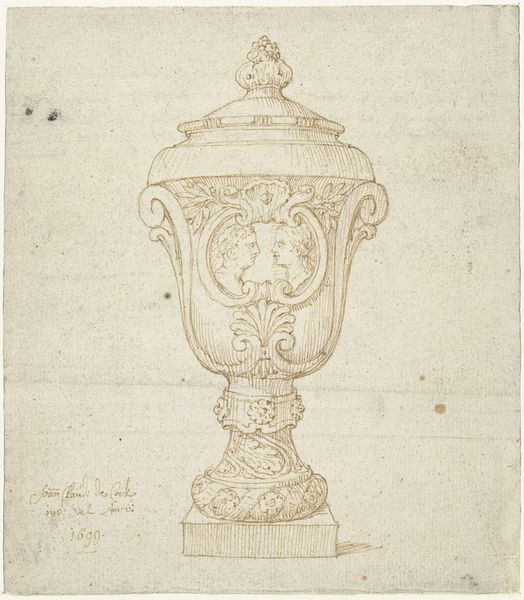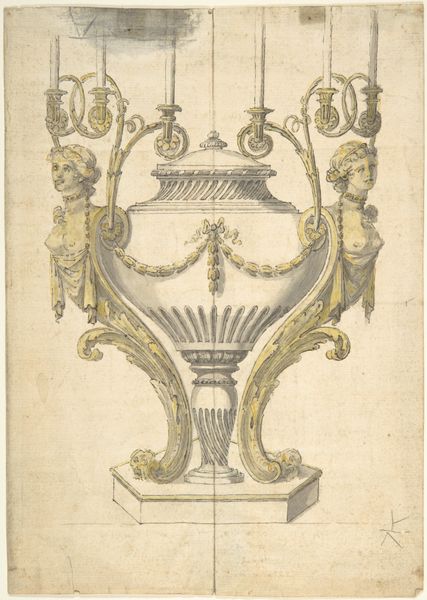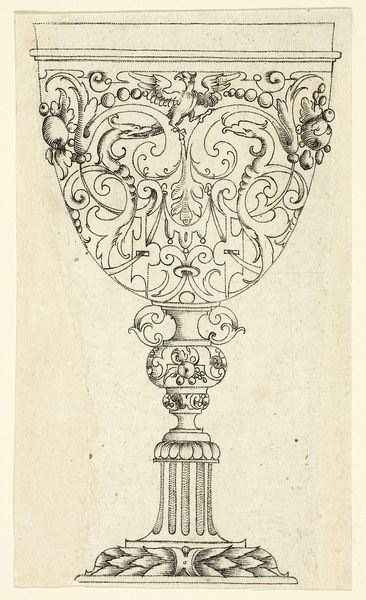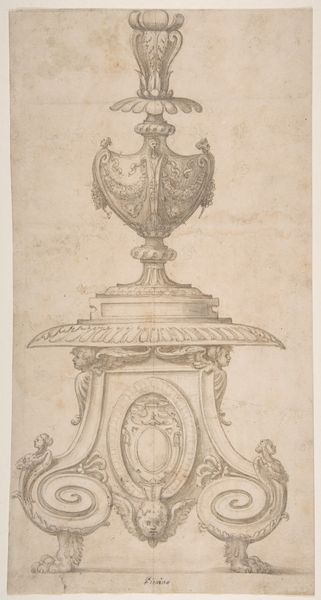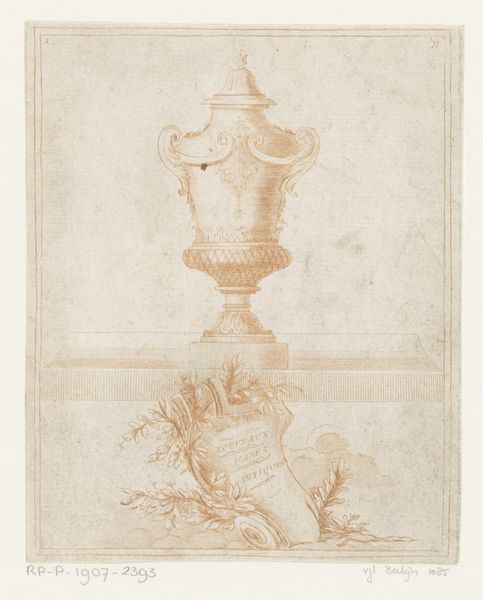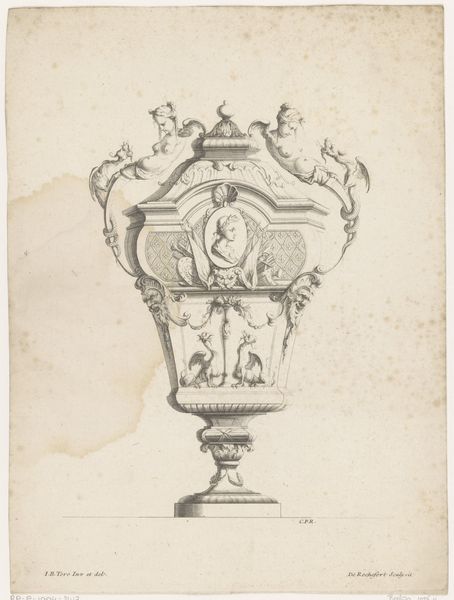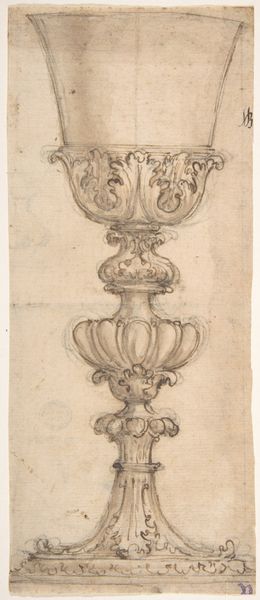
drawing, paper, pencil
#
drawing
#
paper
#
11_renaissance
#
geometric
#
pencil
#
academic-art
Dimensions: Sheet: 12 11/16 × 8 11/16 in. (32.3 × 22 cm)
Copyright: Public Domain
Editor: This is "Design for a Chalice," made sometime between 1525 and 1585, by an anonymous artist. It’s a drawing in pencil on paper. The chalice is incredibly ornate. How should we approach understanding the social role of such elaborate objects in this period? Curator: It's essential to look at this chalice, not just as a beautiful object, but as a nexus of power, religion, and social hierarchy. What does such meticulous detail, particularly in the context of religious iconography, communicate about the Church's position and influence at that time? Editor: I suppose it projects wealth and authority? But were there dissenting voices questioning such displays? Curator: Precisely! The Renaissance was a period of intense religious and social upheaval. Consider the Reformation, for example. How might reformers have viewed such ostentatious displays of wealth, given their emphasis on piety and simplicity? The very act of creating and possessing such a chalice was a political statement. Editor: So, the chalice is a symbol of the establishment, and maybe even a point of contention? Curator: Absolutely. Its intricate design, its potential precious materials, it all speaks to a very specific social order. Now, think about the artist. Were they challenging or reinforcing that order through this design? Or merely catering to the patronage system? These are the questions we must ask. Editor: That is a powerful point; seeing this drawing now not as a simple design, but as something far more politically and socially charged. Curator: Exactly! These objects, and their representations, offer invaluable insight into the complex power dynamics of the time. It pushes us to reconsider who benefits from certain artistic choices.
Comments
No comments
Be the first to comment and join the conversation on the ultimate creative platform.
